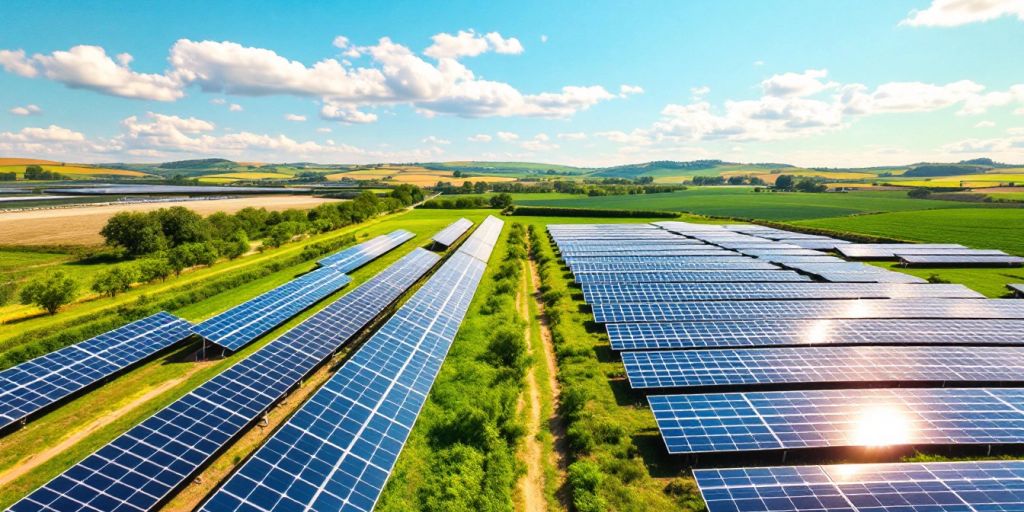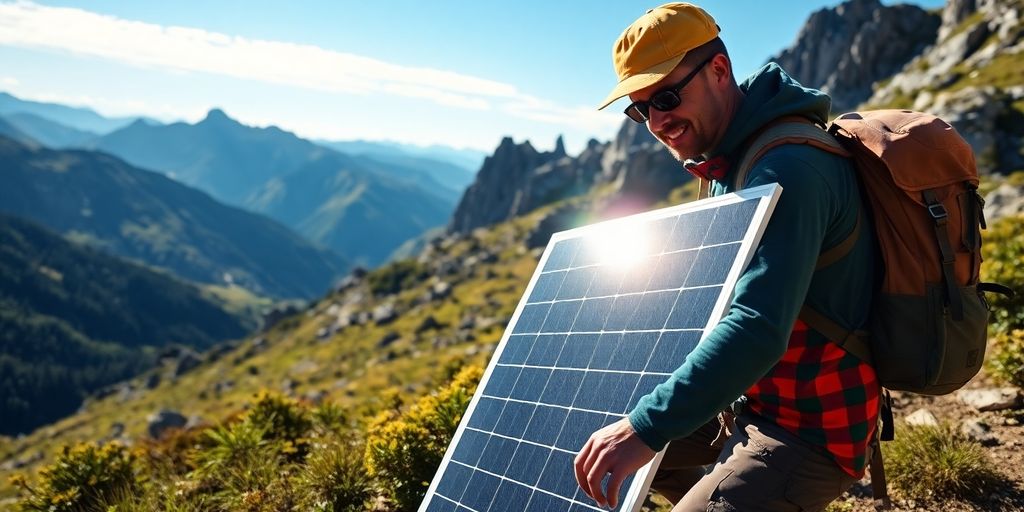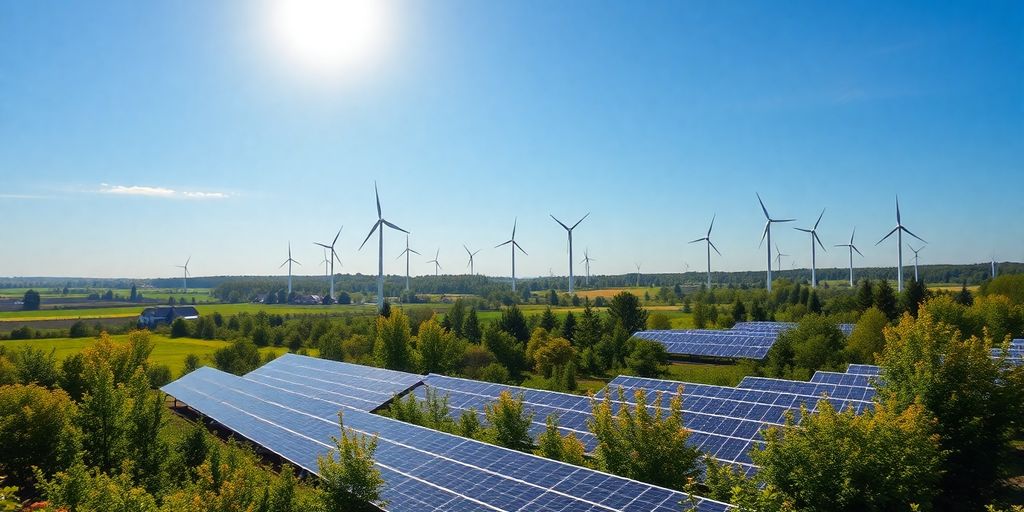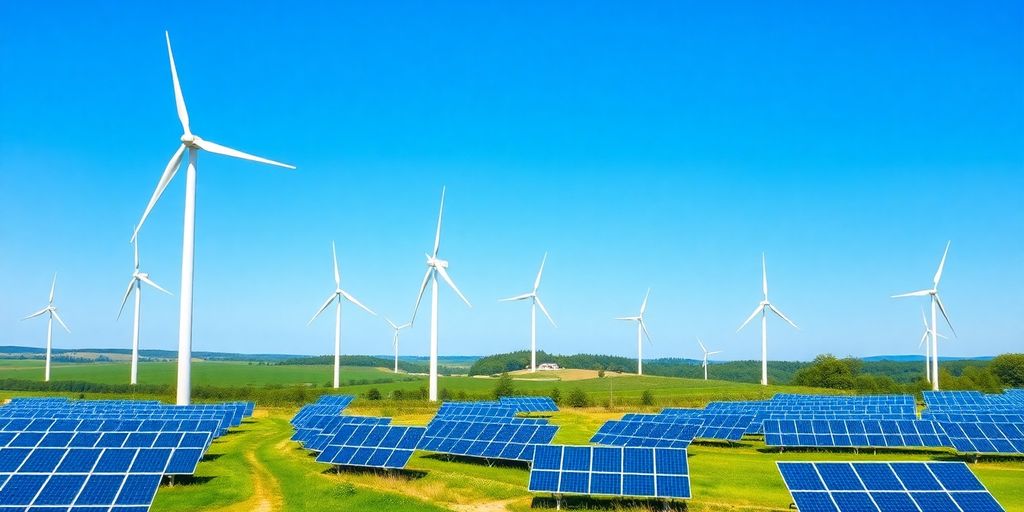How Many Solar Panels Do We Need to Power the Entire World?

As the world grapples with the pressing need for sustainable energy sources, solar power emerges as a pivotal solution. This article explores the question: how many solar panels do we need to power the entire world? By examining global energy consumption, the mechanics of solar energy, and the practicalities of implementation, we aim to shed light on this critical topic and understand the feasibility of a solar-powered future.
Key Takeaways
- The world consumes vast amounts of energy, necessitating significant solar panel installations to meet future needs.
- Solar panels convert sunlight into electricity, with various types and efficiencies affecting their overall output.
- Calculating the number of solar panels required depends on factors like energy output, efficiency, and geographical location.
- The installation of solar farms is influenced by land availability, climate, and optimal locations for solar energy generation.
- Economic factors and technological advancements play a crucial role in the growth and adoption of solar energy worldwide.
Understanding Global Energy Consumption

Current Global Energy Demand
The world energy supply and consumption is a crucial topic. Currently, the global demand for energy is around 500 quadrillion Btu. By 2030, this number is expected to rise to 678 quadrillion Btu, which is a significant increase. This demand comes from various sources, including:
- Electricity for homes and businesses
- Transportation fuels
- Industrial processes
Projected Future Energy Needs
Looking ahead, experts predict that by 2050, the global population will reach about 10 billion. This means energy needs will grow even more. For instance, if each person uses an average of 18,000 kWh per year, the total energy required would be around 180,000 TWhrs/year. This projection highlights the importance of finding sustainable energy solutions.
Energy Consumption by Region
Energy consumption varies greatly by region. Here’s a quick overview:
| Region | Current Consumption (Quadrillion Btu) | Projected Consumption (2030) |
|---|---|---|
| North America | 100 | 120 |
| Europe | 80 | 90 |
| Asia | 200 | 300 |
| Africa | 30 | 50 |
Understanding these trends is essential for planning how to meet future energy needs sustainably.
The shift towards renewable energy sources is not just a choice; it is a necessity for our planet’s future.
Basics of Solar Energy
How Solar Panels Work
Solar panels generate energy by converting the sun’s photons into an electric current. This process is called the photovoltaic effect. When sunlight hits the solar cells, it excites electrons, creating an electric flow.
Types of Solar Panels
There are mainly three types of solar panels:
- Monocrystalline: Made from a single crystal structure, these panels are known for their high efficiency.
- Polycrystalline: Made from multiple crystal structures, they are generally less expensive but also less efficient.
- Thin-Film: These panels are lightweight and flexible, but they usually have lower efficiency compared to the other types.
Efficiency of Solar Panels
The efficiency of solar panels refers to how much sunlight they can convert into usable electricity. Here’s a quick comparison:
| Type of Solar Panel | Average Efficiency (%) |
|---|---|
| Monocrystalline | 15-22% |
| Polycrystalline | 13-16% |
| Thin-Film | 10-12% |
Solar energy is a renewable resource that can significantly reduce our reliance on fossil fuels.
Understanding these basics is crucial as we explore how many solar panels are needed to power the entire world.
Calculating the Number of Solar Panels Needed
Factors Influencing Solar Panel Requirements
To determine how many solar panels are needed to power the world, several factors must be considered:
- Global energy consumption: The total energy demand worldwide is estimated to be around 23,696 TWh annually.
- Panel efficiency: Most solar panels have an efficiency of about 20%, meaning they convert 20% of sunlight into usable energy.
- Location and sunlight availability: Different regions receive varying amounts of sunlight, affecting how many panels are needed.
Average Energy Output of Solar Panels
On average, a standard solar panel can produce about 400 kWh of energy per year per square meter. This means:
| Parameter | Value |
|---|---|
| Total energy needed (TWh) | 23,696 |
| Energy produced per panel (kWh) | 400 |
| Total panels needed | 59,240,000,000 |
Conversion Efficiency and Losses
It’s important to account for losses in energy conversion and transmission. Factors include:
- Transmission losses: Energy lost when moving electricity from solar farms to homes.
- Panel degradation: Over time, panels lose efficiency, typically around 0.5% per year.
- Weather conditions: Cloud cover and other weather factors can reduce energy output significantly.
To effectively power the world with solar energy, we must consider not just the number of panels, but also their efficiency and the energy losses that occur during conversion and transmission. Understanding these factors is crucial for accurate calculations.
Geographical Considerations for Solar Panel Installation
Optimal Locations for Solar Farms
When planning solar farms, location is key. The best places for solar farms typically include:
- Areas with high sunlight exposure
- Regions with minimal cloud cover
- Locations near existing power infrastructure
Impact of Weather and Climate
Weather and climate significantly affect solar energy production. Factors to consider include:
- Average sunlight hours per day
- Seasonal variations in sunlight
- Frequency of extreme weather events
Land Use and Availability
The amount of land required for solar farms can be substantial. For instance, to power the world, we would need approximately 496,805 square kilometers of land. This is roughly the size of Spain. Here’s a quick breakdown of land requirements:
| Requirement | Area Needed (sq km) |
|---|---|
| Total area for solar farms | 496,805 |
| Area of Spain | 505,990 |
| Area of New Mexico (for context) | 314,917 |
The area needed for solar panels may seem large, but it can be distributed across various regions to minimize impact on local ecosystems.
In conclusion, understanding geographical factors is essential for effective solar panel installation. By choosing optimal locations and considering weather patterns, we can maximize the efficiency of solar energy production.
Economic and Environmental Impacts
Cost of Solar Panel Production and Installation
The cost of solar panels has dropped significantly over the past decade. This reduction is due to advancements in technology and increased production efficiency. Here are some key points:
- Lower production costs: The price of solar panels has decreased by about 80% since 2010.
- Installation expenses: While installation costs vary by region, they have also seen a decline, making solar energy more accessible.
- Long-term savings: Homeowners can save on electricity bills, often recovering their initial investment within a few years.
Environmental Benefits of Solar Energy
Solar energy is a clean and renewable source of power. It provides immense resources which can generate clean, non-polluting and sustainable electricity, thus resulting in no global warming emissions. Here are some environmental advantages:
- Reduces greenhouse gas emissions.
- Decreases air pollution, leading to better public health.
- Conserves water compared to traditional energy sources.
| Environmental Impact | Traditional Energy Sources | Solar Energy |
|---|---|---|
| Greenhouse Gas Emissions | High | None |
| Water Usage | High | Low |
| Air Pollution | Significant | None |
Challenges and Limitations of Solar Power
Despite its benefits, solar energy faces some challenges:
- Intermittency: Solar power generation depends on sunlight, which can be inconsistent.
- Space requirements: Large areas are needed for solar farms, which can compete with land for agriculture or housing.
- Initial investment: Although costs are decreasing, the upfront investment can still be a barrier for some.
Solar energy is a promising solution for a sustainable future, but it requires careful planning and investment to overcome its challenges.
Technological Innovations in Solar Energy

Advancements in Solar Panel Technology
Recent innovations in solar technology are changing the way we harness energy. New types of solar panels are being developed that are more efficient and cost-effective. Some key advancements include:
- Bifacial solar panels that capture sunlight from both sides.
- Thin-film solar cells that are lightweight and flexible.
- Building-integrated photovoltaics (BIPV) that blend into building materials.
Energy Storage Solutions
To make solar energy more reliable, energy storage solutions are crucial. These technologies help store excess energy for use when the sun isn’t shining. Some popular options are:
- Lithium-ion batteries for home use.
- Flow batteries for larger installations.
- Hydrogen storage for long-term energy needs.
Integration with Existing Energy Grids
Integrating solar energy into our current energy systems is essential for a smooth transition. This involves:
- Upgrading grid infrastructure to handle more renewable energy.
- Implementing smart grid technology for better energy management.
- Encouraging community solar projects to involve more people in solar energy.
The future of solar energy looks bright as new solar panel technology trends emerge, creating opportunities to reduce energy costs and boost energy independence.
By focusing on these innovations, we can make solar energy a more viable option for everyone around the world.
Policy and Global Cooperation
International Agreements on Renewable Energy
Global cooperation is essential for promoting solar energy. International agreements help countries work together to achieve renewable energy goals. Some key agreements include:
- The Paris Agreement
- The United Nations Sustainable Development Goals
- The International Solar Alliance (ISA)
Government Incentives and Subsidies
To encourage the use of solar energy, many governments offer incentives and subsidies. These can include:
- Tax credits for solar panel installation
- Grants for solar research and development
- Feed-in tariffs that guarantee a price for solar energy produced
Role of Private Sector in Solar Energy Expansion
The private sector plays a crucial role in expanding solar energy. Companies invest in technology and infrastructure, making solar power more accessible. They also:
- Develop innovative solar products
- Create jobs in the renewable energy sector
- Partner with governments to implement solar projects
The International Solar Alliance has over 120 member countries, making it a key player in advancing global solar cooperation, enhancing energy security, and supporting sustainable development.
By working together, countries can significantly increase the adoption of solar energy and help combat climate change.
Final Thoughts on Solar Power for the World
In conclusion, using solar panels to power the entire world is a big challenge, but it’s not impossible. We would need around 51 billion solar panels, which would take up a lot of space—about the size of Spain! While this sounds huge, it shows us how much potential solar energy has. As technology improves and more people start using solar power, we can get closer to making this dream a reality. By investing in solar energy, we can help protect our planet and create a cleaner future for everyone.
Frequently Asked Questions
What is solar energy and how does it work?
Solar energy is energy that comes from the sun. Solar panels capture sunlight and convert it into electricity. This process involves solar cells that turn sunlight into usable power.
How many solar panels are needed to power the whole world?
To power the entire world, we would need about 51 billion solar panels. This is a huge number, and it would require a lot of space to install them.
What factors affect how many solar panels are needed?
Several factors influence the number of solar panels needed, such as the amount of sunlight in an area, the efficiency of the panels, and the total energy demand of the population.
Can solar energy meet all of our energy needs?
Yes, solar energy has the potential to meet all of our energy needs, but it requires a significant amount of space and investment in technology and infrastructure.
What are the benefits of using solar energy?
Solar energy is clean and renewable, which means it does not pollute the environment. It also reduces dependence on fossil fuels and can lower energy costs over time.
Are there any challenges to using solar energy?
Yes, some challenges include the high initial cost of solar panels, the need for large areas to install them, and the fact that solar energy is less effective on cloudy days or at night.








Responses